Nong Pla Lai, Phetchaburi, Thailand
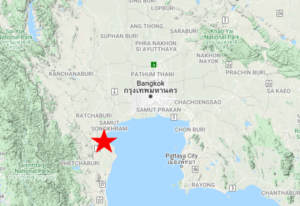
Among central Thailand’s many productive agricultural zones, the rice paddies and fish ponds around Nong Pla Lai stand out for the diversity and concentrations of birds they support. This area is well known for wintering eagles, with Greater Spotted and Booted being regular in numbers and Steppe and Eastern Imperial found most years. Several other raptors and grassland birds such as larks, pipits, bush-warblers, weavers, and munias are also common. This area includes more open water than other sites near Bangkok, so waterbirds are especially numerous and include uncommon species such as Spot-billed Pelican and Black-headed Ibis.
Orientation
Directions
Nong Pla Lai is about an hour and 45 minutes’ drive (115 km) from downtown Bangkok, a short distance off of Route 4, the main highway to southern Thailand, about 10 km north of the small city Phetchaburi.
From Bangkok, take Route 35 west for 85 km, where it feeds into Route 4. Take the southbound exit toward Phetchaburi then proceed to either of two crossroads: (1) at 16 km, turning east onto Route 1004 takes you to Wat Nong Pla Lai and the small train station at the north end of the area; or (2) at 27 km, turning north onto Route 1039 takes you to Bang Chak and its train station at the south end of the area.
As the presence of the two train stations suggests, there is rail service from Bangkok to this area, but it is complicated (requiring a ferry crossing at Samut Sakhon) and infrequent, and unlikely to be convenient for most foreign visitors.
Birdfinding
As in much of central Thailand’s extensive fertile plains, anywhere in the vicinity of Nong Pla Lai could be productive for birds. Local birdwatchers who have explored the area have found a few places to be more consistent than others, but land uses change seasonally and from year to year, and the birds are mobile. Four good options are: (1) the famous raptor watches; (2) the Bang Chak fish ponds; (3) the road to Ban Laem; and (4) the road to Bang Tabun.
Nong Pla Lai Raptor Watch. Nong Pla Lai gets special attention because of its history of attracting raptors, especially wintering eagles, which has resulted in the establishment of a handful of watch points along a side-road (Route 1023) that connects the villages of Nong Pla Lai and Bang Chak. The watch points are not developed, with the exception of interpretive signs that illustrate certain species.
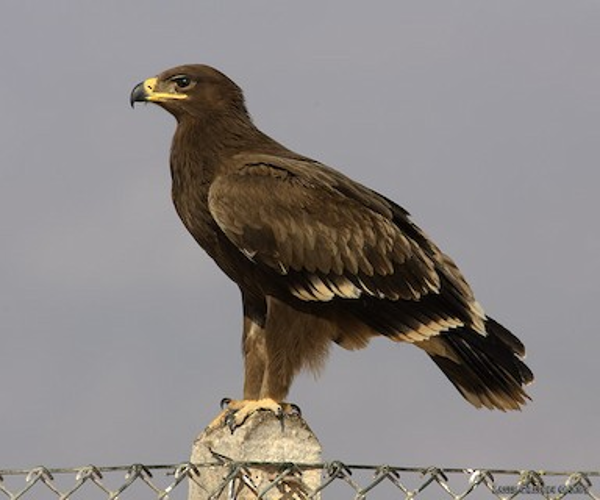
Nong Pla Lai is among the best places in Thailand to find Greater Spotted Eagle. © Lasse Olsson
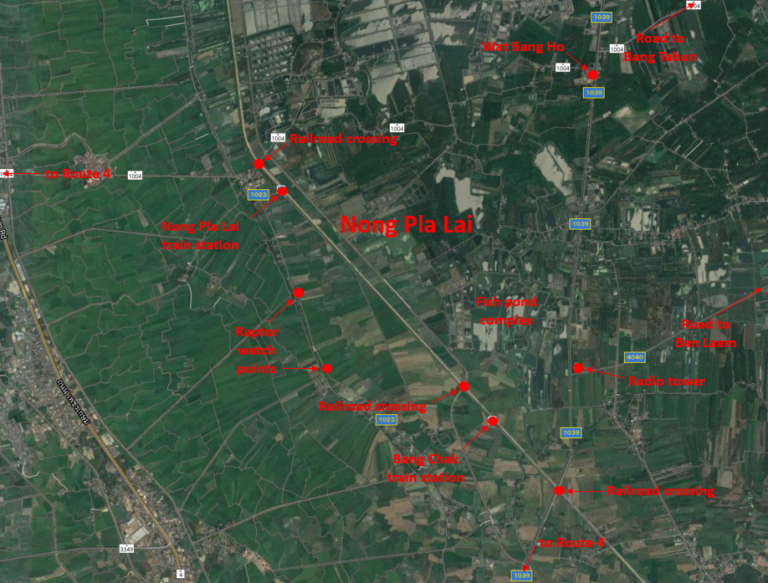
Route 1023 is west of the railroad tracks, and the raptors are typically seen flying over the expansive rice fields between the road and the tracks—consequently, observers generally face eastward, so early morning does not produce ideal viewing conditions.
Species seen regularly from the watch point include: Black-shouldered, Black (including “Black-eared”) and Brahminy Kites, Oriental Honey Buzzard, Black Baza, Greater Spotted, Booted, Steppe, and Eastern Imperial Eagles, Eastern Marsh- and Pied Harriers, Gray-faced Buzzard, Eurasian Kestrel, and Peregrine Falcon.
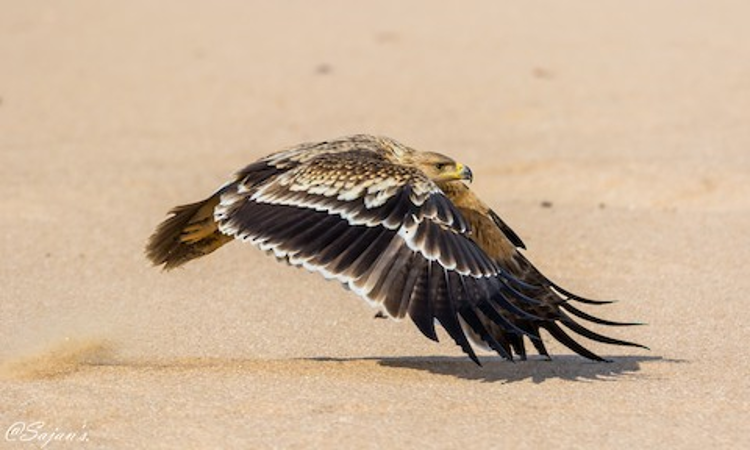
Eastern Imperial Eagle is rare but apparently annual in small numbers at Nong Pla Lai. © Sajan Raju
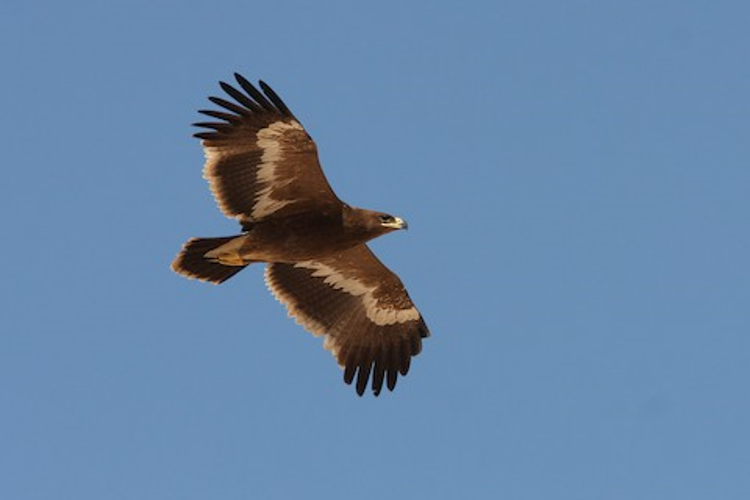
Steppe Eagle is the rarest of the four brown eagles that winter at Nong Pla Lai. © Christoph Moning
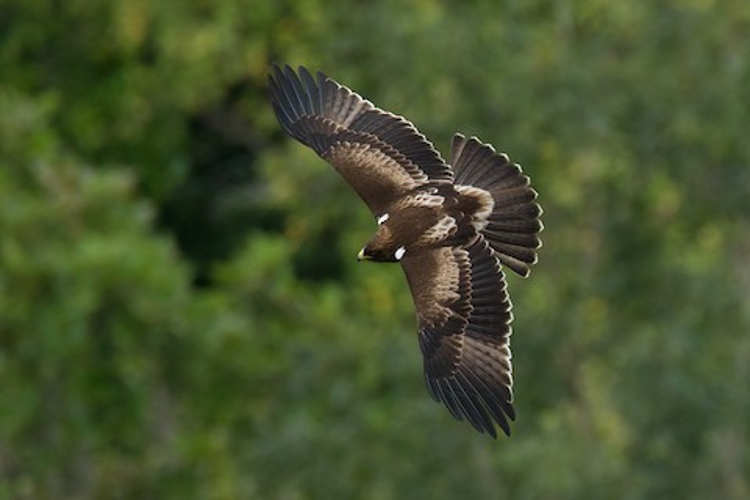
The dark morph of Booted Eagle is identified by distinctive pale spots on its shoulders. © Ayuwat Jearwattanakanok
Bang Chak Fish Ponds. For a diverse assortment of water, marsh, grassland, and edge birds, the fish pond complex at Bang Chak is one of the best patches in central Thailand. It is accessible from either the north or the south—the former is easier to explain, but the latter involves less driving on dusty gravel.
To reach the fish pond complex from the north, at Wat Nong Pla Lai, continue east (or more precisely, northeast) on Route 1004 across the railroad tracks, then immediately turn right onto the large gravel road. This road runs straight, paralleling the railroad, for about 6 km then bends to the south to cross the railroad. On this bend, before the railroad crossing, a smaller track forks to the northeast and leads to the fish ponds.
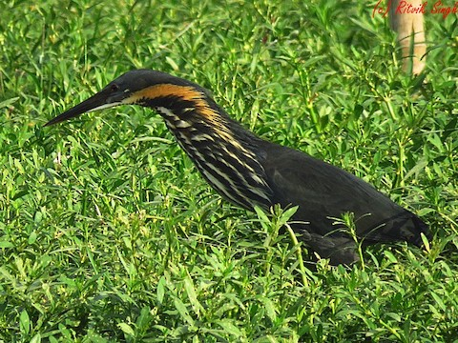
Black Bittern is present year-round at Nong Pla Lai, but more common in the wet season. © Ritvik Singh
The smaller track takes you along the eastern side of the ponds and some open fields, winding as it traces the western bank of a marshy creek bed. It is generally best to park somewhere near the beginning of the track and walk.
The mixture of ponds, marshes, fields, and hedgerows can produce a wide variety of species, including various herons, three bitterns (Yellow, Cinnamon, and Black), Pheasant-tailed and Bronze-winged Jacanas, Freckle-breasted Woodpecker, reed-warblers, Asian Pied Starling, the three weavers (Streaked, Baya, and Asian Golden), Chestnut Munia, Plain-backed Sparrow, Red-throated Pipit, and Yellow-breasted Bunting, among many others. Red Collared-Dove is especially abundant, forming large flocks in winter.
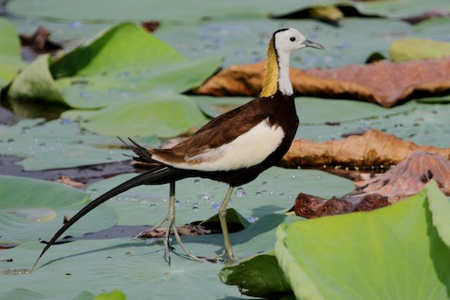
Pheasant-tailed Jacana is common in winter on large ponds at Nong Pla Lai, but rarely seen in breeding plumage. © David Clark
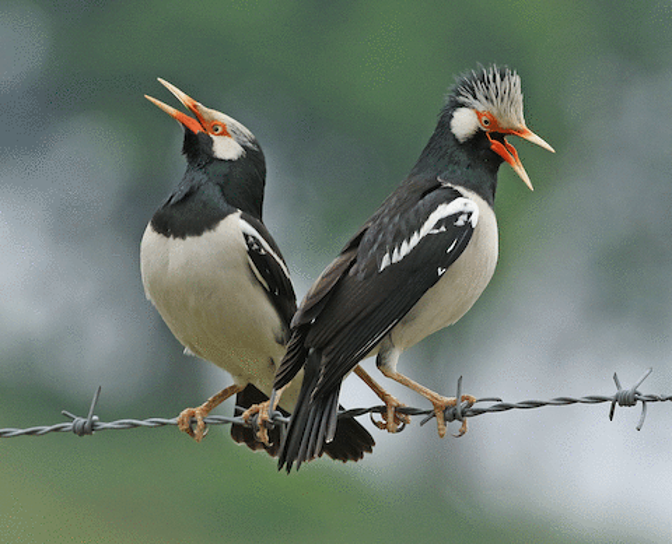
Asian Pied Starling is common and conspicuous at Nong Pla Lai. © Dave Bakewell
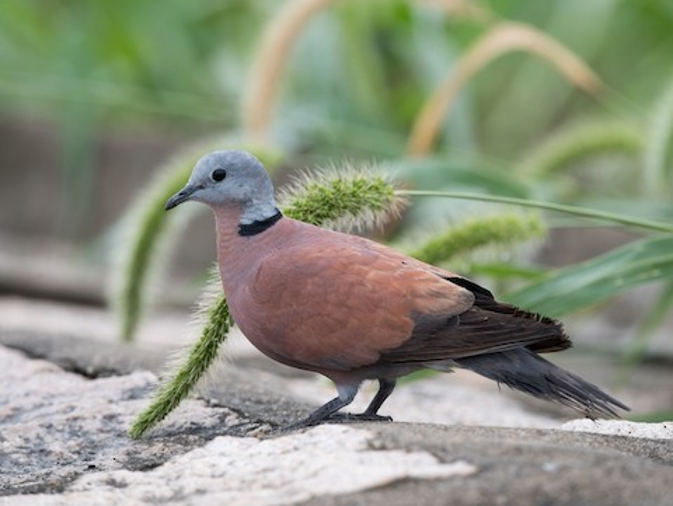
Red Collared-Dove is abundant in the agricultural land around Nong Pla Lai. © Kai Pflug
To reach the fish pond complex from the south, the best landmark is the Bang Chak train station. If you are arriving directly from Route 4, take the Route 1039 exit and proceed 2.4 km, then turn left toward Bang Chak. After 900 m, there is a junction where a right turn would take you to the train station.
Instead of turning, continue straight as the road turns to gravel and proceed approximately 2 km, which will take you across the train tracks to the bend mentioned above, where the smaller track forks to the northeast and leads to the fish ponds.
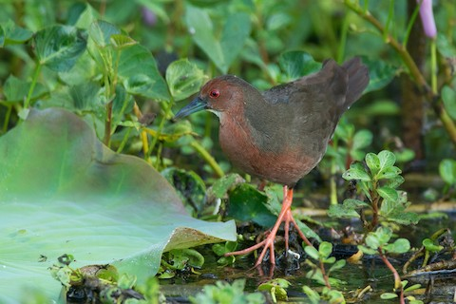
Ruddy-breasted Crake is common in marshes around Nong Pla Lai. © Ayuwat Jearwattanakanok
Road to Ban Laem. Most of the same birds found at Bang Chak also occur along the main road east toward Ban Laem (Route 4040), which passes through a mixed agricultural zone that includes a few fish ponds among rice paddies and plantations.
To reach this area from Route 4, take the Route 1039 exit and proceed about 5 km to the Route 4040 junction, which is just before a prominent radio tower. The tower is a favored perch for certain species, including Ashy Woodswallow. Turn east on Route 4040 and stop wherever birds are in evidence. This road goes approximately 5 km to a T-junction at the Phetchaburi River.

Chestnut Munia is common at Nong Pla Lai. © Luke Seitz
Road to Bang Tabun. More distant from Nong Pla Lai, but worth considering if it fits into your larger plans, heading northeast toward the coast will take you into an extensive brackish wetland area along the estuary of the Phetchaburi River. This zone consists mostly of large open ponds divided by dyke roads and plots of remarkably dense mangrove forest—many so dense that their interiors are in perpetual darkness.
There are relatively few specific destinations in this zone, and access is very limited because most of the side roads are gated, but it hosts large concentrations of waterbirds, including large numbers of Black-headed Ibis, smaller numbers of Glossy Ibis, and Spot-billed Pelicans. In winter, there are large flocks of ducks, although these tend to be shy and remain distant from the main road.

Black-headed Ibis is especially common in the estuarine ponds northeast of Nong Pla Lai. © Christoph Moning
This area is accessible from either Nong Pla Lai or Bang Chak. From Nong Pla Lai continue northeast on Route 1004, or from Bang Chak continue north on Route 1039. These roads meet at Wat Bang Ho. From there, go north on Route 1039 for about 200 m, then turn east onto the continuation of Route 1004, and go 2 km to Wat Khao Takrao, and remain on Route 1004 as it makes a small detour to the north around Wat Khao Takrao. On the east side of Wat Khao Takrao, turn left (northeast) on the only road, which winds its way north to the estuary.
This road eventually arrives at the main coastal road at Bang Tabun. At the final junction, you can turn left (north) to return to Bangkok or right (south) toward Pak Tha Le and Laem Phak Bia.
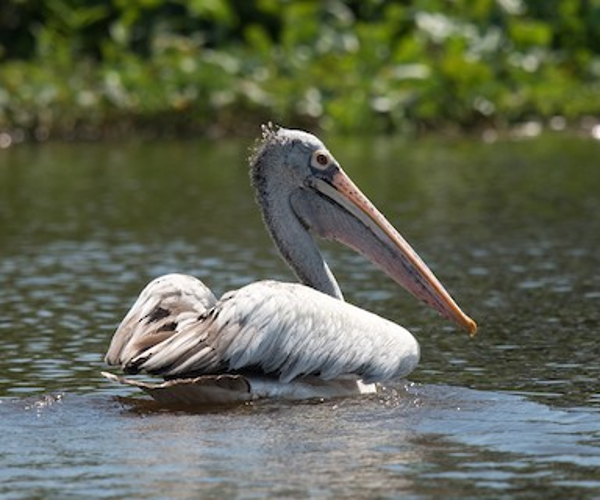
Spot-billed Pelican is often seen as a flyover around Nong Pla Lai, or in the estuarine ponds to the northeast. © Aaron Lang
Notes
When to Visit
Nong Pla Lai is productive year-round, but it is most visited in mid-winter (November to February), when the eagles are most likely to be present, or during migration, when overall diversity and numbers are highest.
Links